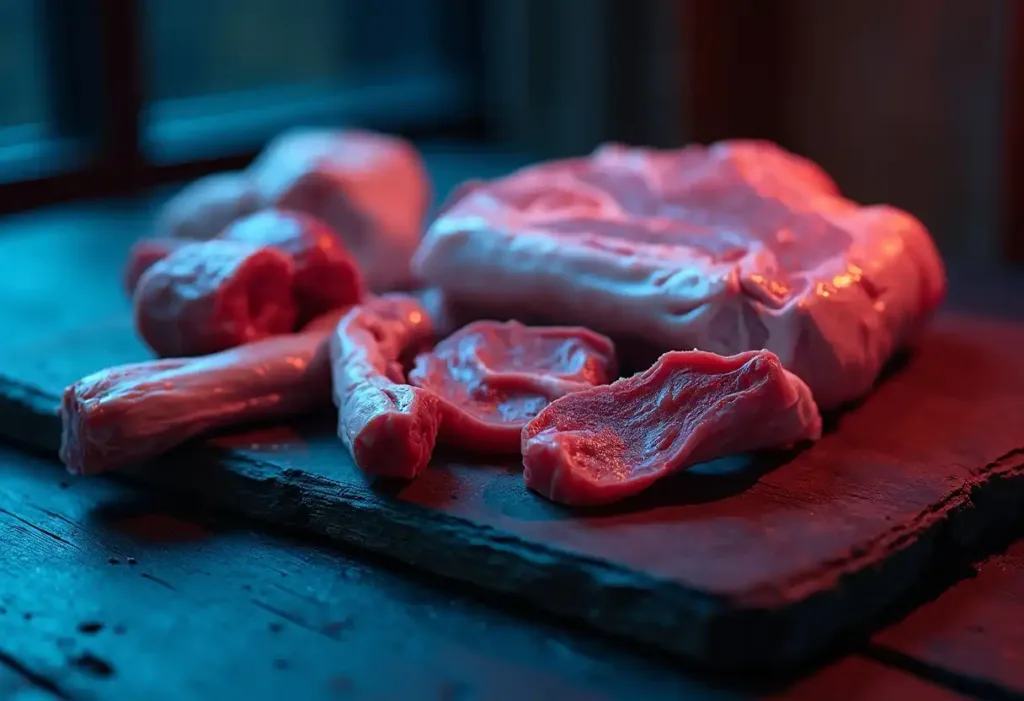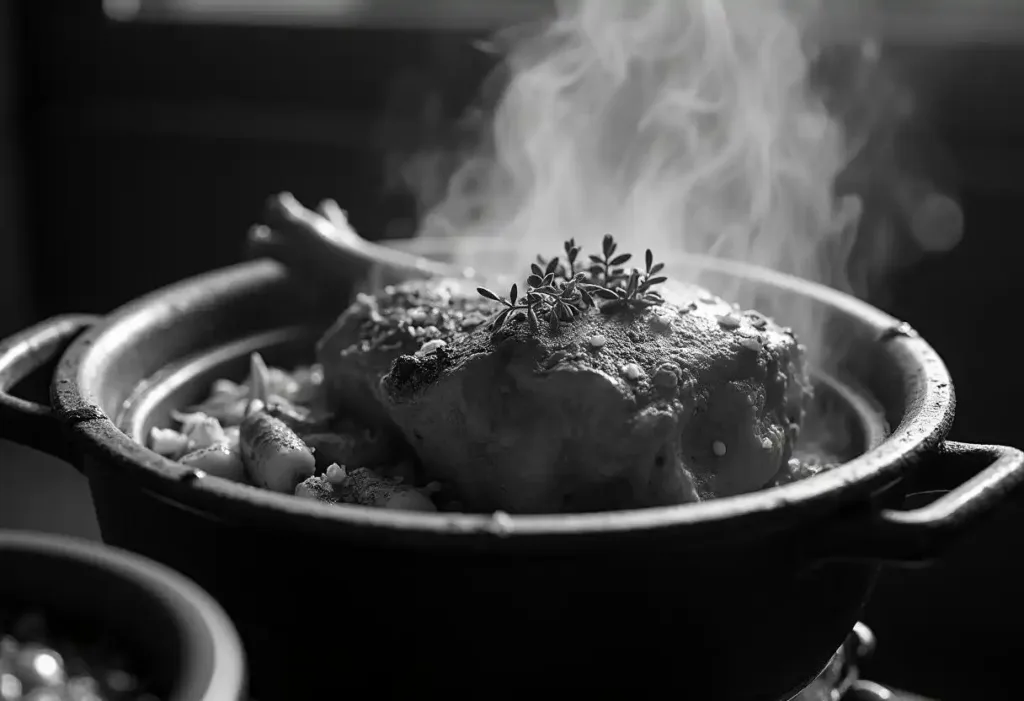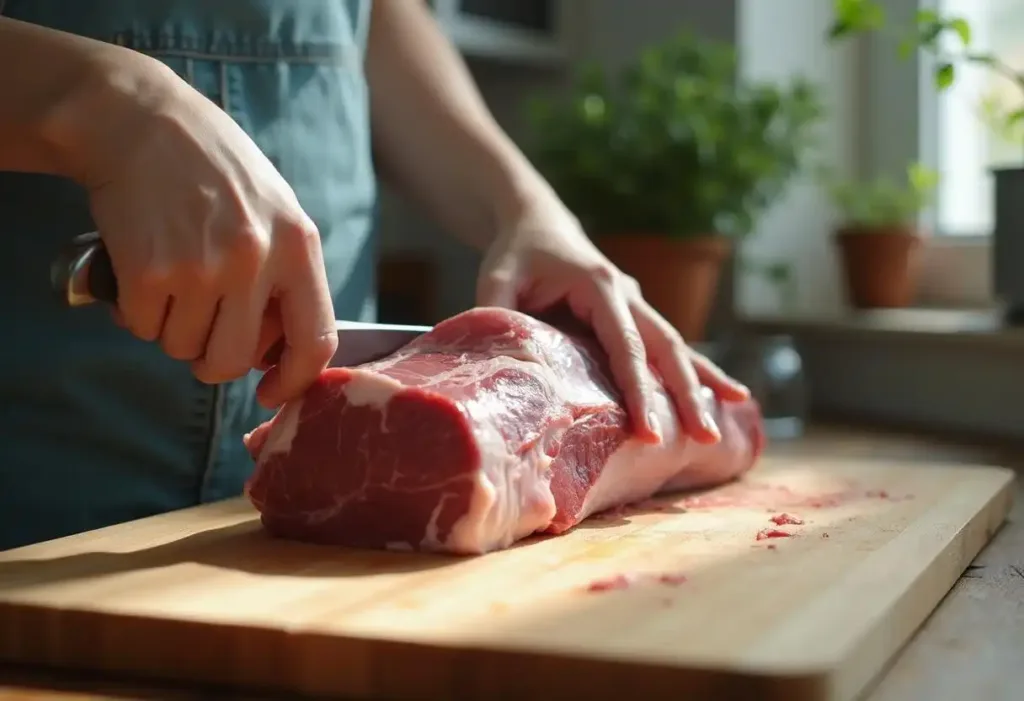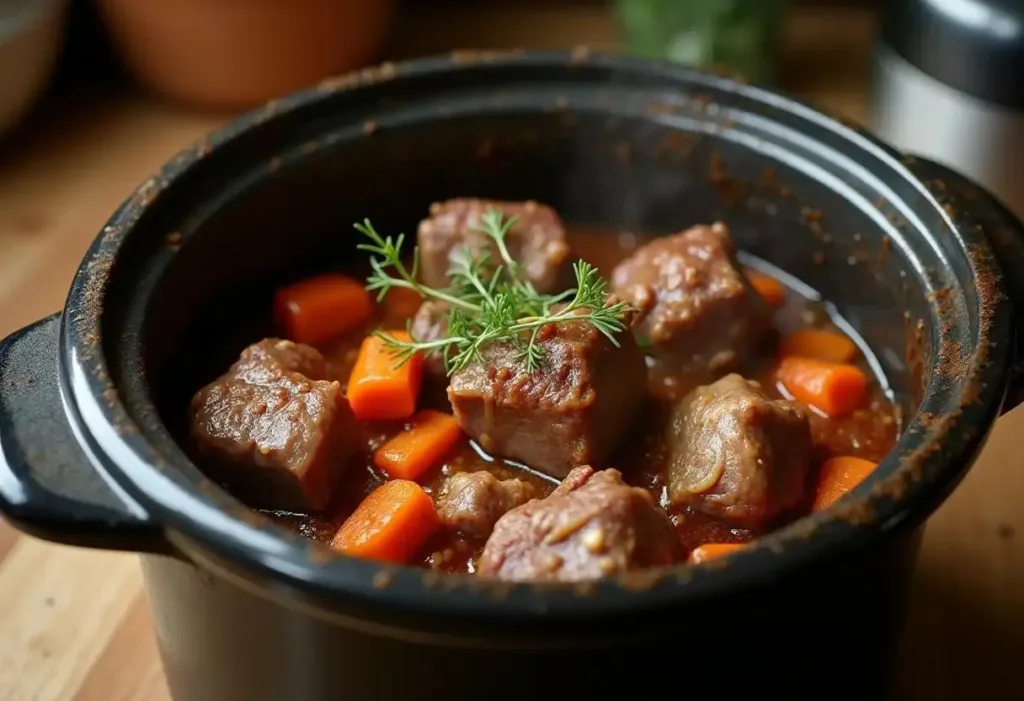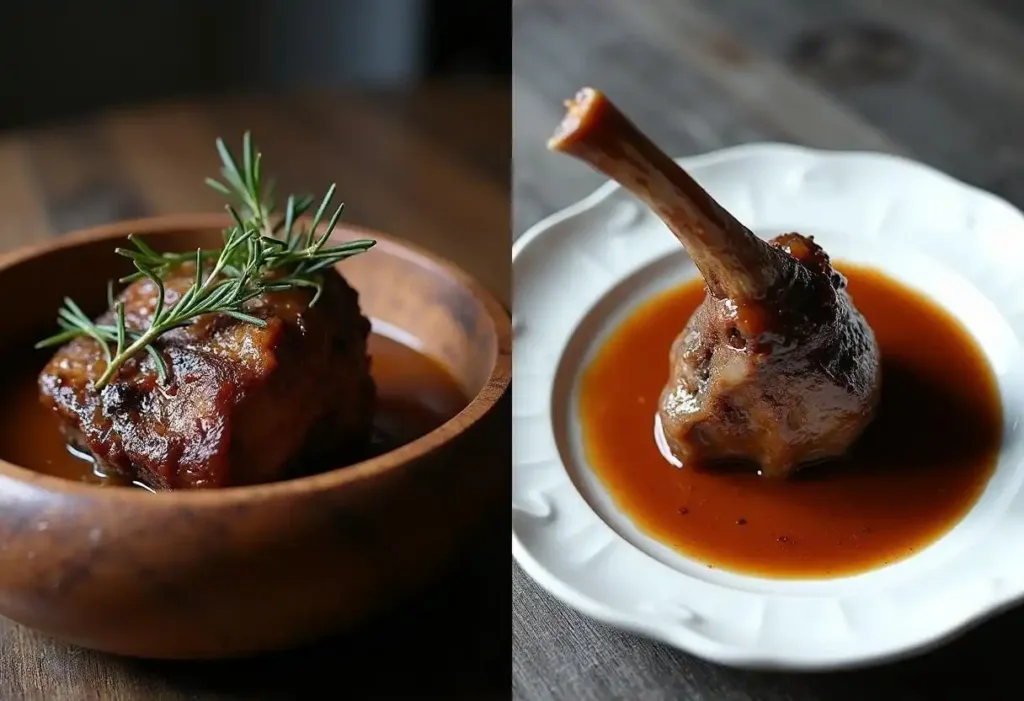Okay, confession time. Have you ever made a lamb hotpot, maybe dreaming of that perfect, cozy, fall-apart tender lamb filling your kitchen with amazing smells… only to end up with meat that’s kinda…meh? Maybe a little tough? Yeah, been there! My husband, Mr. Puns-a-Lot, might joke it needed more “baa-dminton practice,” but I know the real secret often comes down to one simple thing: choosing the right cut of lamb! It sounds basic, but trust me, picking the best cut of lamb for hotpot is step one to achieving that glorious, melt-in-your-mouth perfection we all crave. My kids might not appreciate the nuances, but I know! So, let’s break it down together, nice and easy. No scary butcher talk, just real-world tips from my Portland kitchen to yours!
Understanding Lamb Cuts
A Lamb Cut Overview
Before we crown the hotpot champion, let’s quickly chat about lamb cuts in general. Think of the lamb like a map – different areas do different jobs, and that affects how they taste and cook. Some bits are naturally tender (like fancy steaks), while others are tougher muscles that worked hard. Knowing just a little bit about this helps us pick the perfect piece for our slow-cooked masterpiece.
How Fat and Muscle Affect Tenderness
Here’s the juicy secret: fat and connective tissue (the stuff that holds muscles together) are our friends when it comes to slow cooking! Cuts with more of this goodness, like shoulder or shank, might seem tougher at first, but give them time in that lovely broth, and magic happens. The fat melts, keeping everything moist and flavorful, and the connective tissue breaks down into yummy gelatin, making the meat incredibly tender. Leaner cuts? They have their place, but they can dry out if you slow-cook them for too long.
Common Uses for Different Lamb Cuts
So, different cuts shine in different ways. Those lean guys like lamb loin or leg? Awesome for roasting pink or grilling fast. But the cuts with more character, more fat, more tissue – like shoulder, shank, or neck? They adore being cooked low and slow in things like stews, braises, and our beloved hotpot! Knowing this helps us match the cut to the cooking method like a pro.
The Best Lamb Cuts for Hotpot
Top Choices for Slow Cooking
Okay, drumroll please! When you’re hunting for the best lamb for hotpot , these are your superstars: Lamb Shoulder , Lamb Shank , and Lamb Neck . These guys are the MVPs of slow cooking. They have exactly what we need to turn into that tender, flavorful, fall-off-the-bone (sometimes literally!) goodness after a few hours simmering away.
Why These Cuts Work Best
Why are shoulder, shank, and neck the winners? It all comes back to that fat and connective tissue we talked about. These cuts have plenty of both! During that long, gentle simmer in the hotpot, the fat melts (adding flavor and keeping things juicy!) and the tough connective tissue magically transforms into silky gelatin. This is what gives you that incredibly tender, almost shreddable meat and a richer broth. Mamma mia, it’s delicious science!
Flavor and Texture Considerations
Beyond just getting tender, each of these cuts brings its own personality to the flavor party. Lamb shoulder offers a classic, rich lamb taste. Shank brings a deeper, almost more intense savory flavor (thanks, bone!). And lamb neck? It can be surprisingly slightly sweeter, adding a lovely complexity. So, depending on what kind of flavor profile you’re after, you’ve got options! Let’s look at each one.
Lamb Shoulder: The Go-To Cut
Why Lamb Shoulder is a Popular Choice
Think of lamb shoulder as your reliable best friend for hotpot. It’s popular for a reason! It strikes a great balance – plenty of that lovely fat and connective tissue for tenderness and flavor, but usually pretty easy to find and often more affordable than other cuts. It consistently delivers delicious, tender results, making it a fantastic, dependable choice, especially if you’re new to making lamb hotpot.
Fat Content and Collagen Breakdown
Yep, lamb shoulder has got the goods! That marbling of fat renders down beautifully, basting the meat as it cooks. And all that collagen? It slowly melts into luscious gelatin, making the meat incredibly succulent and giving the broth a wonderful body. It’s the secret to that truly comforting, melt-in-your-mouth texture.
Preparing Lamb Shoulder for Hotpot
Prep is pretty straightforward. You can ask your butcher to cut it into chunks (around 1.5-2 inches is good), or do it yourself. Trim off any really thick, hard pieces of fat from the outside, but leave some on – remember, fat is flavor! And definitely, definitely sear those pieces in your hot pot before adding the liquid. Getting that nice brown crust adds layers of deep, savory flavor. Don’t skip the sear!
Lamb Shank: Rich and Flavorful
The Distinctive Flavor of Lamb Shank
Oh, lamb shanks! These guys are flavor bombs. Because they’re usually cooked with the bone in, they release all that amazing marrow and extra richness into the broth as they simmer. The flavor is deep, intense, and unmistakably lamby in the best possible way. If you want a hotpot with some serious savory depth, shanks are a fantastic choice.
Gelatinous Texture from Lamb Shank
Just like the shoulder, shanks are loaded with connective tissue. After a few hours of gentle cooking, that tissue transforms, making the meat fall-off-the-bone tender and giving the broth a wonderfully rich, almost velvety texture. It’s that comforting, lip-smacking goodness!
Best Practices for Using Lamb Shank
You usually cook lamb shanks whole in a hotpot (they look impressive!). Definitely sear them well on all sides first to build flavor. Because they’re chunky, make sure you have enough broth in the pot to keep them mostly submerged while they cook – you don’t want them drying out. Be patient; they need that slow cooking time to become truly tender.
Lamb Neck: An Underrated Option
Why Lamb Neck is a Budget-Friendly Choice
Okay, let’s talk about a hidden gem: lamb neck! It might not be as glamorous as shoulder or shank, but don’t overlook it. Lamb neck is often much cheaper, making it a super savvy choice if you’re feeding a crowd or just watching your pennies. And guess what? It’s incredibly flavorful!
Flavor Profile of Lamb Neck
Lamb neck has a lovely, slightly sweeter lamb flavor compared to the other cuts. It’s also packed with bone and connective tissue, which means – you guessed it – tons of flavor released into the broth and meat that gets beautifully tender and gelatinous after slow cooking. It adds a really wonderful, complex taste to the hotpot.
Tips for Cooking with Lamb Neck
Lamb neck usually comes in slices or chunks. It’s best to treat it like shoulder – sear the pieces well before adding them to the pot. Because it has bones and cartilage, it definitely benefits from that long, slow cooking time to break everything down nicely. Make sure there’s enough liquid, cover it up, and let it simmer away until tender. You’ll be rewarded with something truly special!
Cuts to Avoid (and Why)
Lamb Loin: Too Lean for Hotpot
Now, what not to use? Save those beautiful lamb loin chops for grilling! The loin is super lean and tender, which is great for quick cooking, but terrible for slow cooking. It doesn’t have the fat or connective tissue needed for a hotpot, so it will just end up dry, tough, and kinda sad. Mamma mia, don’t do it!
Lamb Leg: Best for Other Cooking Methods
Similarly, while a leg of lamb is fantastic for roasting, it’s generally too lean for a traditional hotpot. It just won’t get that melty tenderness we want from slow cooking. It might work , but it won’t be as luxurious or forgiving as shoulder, shank, or neck. Stick to roasting that leg!
Why These Cuts Don’t Work in Hotpot
Bottom line: lean cuts like loin and leg lack the magic ingredients (fat and collagen!) that make slow-cooked lamb amazing. They’re designed for faster cooking methods. Trying to force them into a hotpot is like trying to fit a square peg in a round hole – it just doesn’t give you the best result!
The Role of Fat in Hotpot
Fat as a Flavor Carrier
Let’s talk fat! Nonna always said, “Fat is flavor!” and she wasn’t wrong, especially here. Fat carries so much of that delicious lamby taste. As it cooks, it melts and bastes the meat, keeping it juicy and infusing the broth with richness. Don’t fear the fat in these slow-cooking cuts!
Rendering Fat for Moisture
That melting process is called rendering. As the fat renders down slowly over hours, it adds moisture directly into the meat and the surrounding broth. This is crucial for preventing lean-out and ensuring every bite is succulent. It also coats the veggies, making them taste extra yummy.
Achieving the Right Balance
Now, we want flavor, not an oil slick! While fat is good, too much can make the hotpot greasy. That’s why we trim off the really thick, hard fat cap before cooking. But leave the fat marbled within the meat – that’s the good stuff! It’s all about finding that happy medium for rich flavor without unpleasant greasiness.
Bone-In vs. Boneless Lamb
Pros and Cons of Bone-In Lamb
To bone, or not to bone? Bone-in cuts (like shank or shoulder chops/pieces with bone) definitely add extra flavor. The bones release marrow and other compounds into the broth, making it richer and deeper tasting. The downside? They can sometimes be a bit trickier to eat around, and they take up more space in the pot.
Pros and Cons of Boneless Lamb
Boneless lamb shoulder is super convenient – easy to cut, easy to eat, no bones to navigate. You might lose a tiny bit of that deep bone flavor, but honestly, it will still be incredibly delicious! It might cook slightly faster too. It really comes down to convenience versus that last bit of flavor depth.
Making the Right Choice
Honestly? There’s no wrong answer here! Both bone-in and boneless shoulder (or neck) work great. Shank is almost always bone-in. Choose based on what’s available, your budget, and whether you mind eating around bones. It’ll be delicious either way!
Preparation Tips for Lamb
Trimming Excess Fat
Like we mentioned, trim off any really thick, hard layers of fat from the outside of your lamb cut. You want to leave the fat marbled within the muscle, but get rid of any huge chunks on the surface that might just make things greasy. A little trim goes a long way.
Searing for Added Flavor
I know I sound like a broken record, but SEAR YOUR MEAT! Pat the lamb pieces dry, season them well, and brown them in batches in your hot pot before adding anything else. This caramelization builds incredible depth of flavor – it’s like laying the foundation for deliciousness. Don’t skip it!
Cutting Lamb into Appropriate Sizes
Whether you buy it pre-cut or do it yourself, aim for roughly similar-sized pieces (1.5 to 2 inches is usually good). This helps ensure everything cooks evenly, so you don’t end up with some pieces perfectly tender and others still a bit tough. Consistency is key!
Slow Cooking Benefits for Lamb
Breaking Down Tough Fibers
Slow cooking is like a spa day for those tougher cuts of lamb! That gentle, moist heat over a long time works miracles on the muscle fibers and connective tissue. It patiently breaks them down, transforming potentially chewy meat into something unbelievably tender. You can explore different slow-cooking methods and tips in this useful guide on Simply Recipes.
Tenderizing the Meat
Seriously, the main benefit is TENDERNESS! Low and slow is the secret weapon. It allows the collagen to melt into gelatin without squeezing all the moisture out of the muscle fibers (like high heat can do). Result? Juicy, succulent, fall-apart lamb every time.
Enhancing Flavor Development
Slow cooking isn’t just about texture; it’s about flavor marrying! All those ingredients – the lamb, the veggies, the herbs, the broth – have hours to hang out together, get cozy, and meld their flavors into something truly deep and complex. It’s a flavor party, and everyone’s invited!
Other Factors Affecting Lamb Tenderness
- Cooking Time and Temperature
We’ve said it before, but it bears repeating: LOW temperature and LONG time are key for these cuts. Rushing it with higher heat will likely result in tough meat. Be patient! - Acidity of Added Liquids
A little acidity can actually help tenderize meat. That splash of red wine or even a dash of vinegar or Worcestershire sauce in the broth can give the tenderizing process a gentle nudge. - Moisture Content During Cooking
Keep that lamb happy in its broth! Ensure there’s enough liquid in the pot throughout cooking so the meat stays submerged or at least very moist. If it looks like it’s drying out (especially on the stovetop), add a splash more hot broth or water.
Flavor Profiles of Different Cuts
- Lamb Shoulder: Robust and Rich
Shoulder gives you that classic, hearty, satisfying lamb flavor. It’s rich, meaty, and exactly what most people think of when they imagine delicious slow-cooked lamb. Can’t go wrong! - Lamb Shank: Deep and Savory
Shank takes it up a notch in intensity. Thanks to the bone and marrow, the flavor is deeper, more savory, almost primal in a good way! It makes for a really memorable, robust hotpot. - Lamb Neck: Slightly Sweeter
And our surprise contender, the neck, often has a slightly milder, sweeter lamb flavor. It’s still wonderfully flavorful but perhaps a little less intense than shank, adding a lovely complex note to the dish. Understanding how different cooking methods impact flavor and texture is key; this article comparing pressure cookers and slow cookers touches on some interesting points, even if we’re focusing on slow cooking here.
Where to Source Your Lamb
- Butcher Shops: Quality and Expertise
My first choice? Your friendly local butcher! They know their stuff, can recommend the perfect cut, trim it for you, and often have higher quality, well-sourced meat. Plus, you can ask questions! They’re your meat BFFs. - Supermarkets: Convenient but Check Quality
Supermarkets are super convenient, no doubt. Just be a savvy shopper! Look for meat that looks fresh (nice color, not greyish), check the expiration date, and choose pieces that look well-marbled if possible for these cuts. - Freshness and Quality Guidelines
Wherever you buy it, trust your eyes and nose. Good quality lamb should look fresh and have a mild, pleasant smell (or no smell at all). Avoid anything that looks slimy, dried out, or smells off. Freshness makes a huge difference in the final taste!
FAQs
Q: What part of lamb is used for hotpot?
A: The best parts of lamb for hotpot are the cuts that become incredibly tender when cooked low and slow. Think of the lamb shoulder, lamb shank, or lamb neck. These parts have a good amount of fat and connective tissue, which break down during cooking and create a wonderfully rich and tender result.
Q: What cut of meat to use for hotpot?
A: For a fantastic hotpot, choose cuts of meat that are great for slow cooking. Lamb shoulder is an amazing option, as it’s known for becoming very tender and flavorful when cooked for a long time. Lamb shank is another winner, giving a deep rich flavour and a gelatinous texture. These are some of the cuts of meat to use for a hotpot.
Q: What cut of lamb for stew?
A: Similar to a hotpot, the best cuts of lamb for a stew are those that do well with slow, moist heat. Lamb shoulder is often the top choice, providing a lot of flavor and becoming wonderfully tender as it simmers. You could also use lamb shank or lamb neck for a great stew, which are all full of flavor and tend to be a more economical choice.
Q: What meat is lean for hotpot?
A: While lamb isn’t typically considered a lean meat, you can opt for cuts that have a slightly lower fat content compared to others. Lamb leg, which is a leaner cut than shoulder or shank, may be considered if you prefer less fat in your hotpot. However, do note that cuts with more fat, like the shoulder, often result in a more flavorful and tender dish due to the rendered fat during cooking.
Conclusion
So, there you have it! Choosing the best cut of lamb for hotpot really does make all the difference between a good meal and a truly spectacular, cozy, comforting feast. Remember, your top choices are lamb shoulder , lamb shank , and lamb neck – they have that magic combination of fat and connective tissue that turns into melt-in-your-mouth tenderness with slow cooking. Save those leaner cuts like loin and leg for grilling or roasting!
Hopefully, you’re feeling confident and ready to head to the butcher (or the supermarket!) to pick out the perfect piece for your next hotpot adventure. Don’t be afraid to ask questions, sear that meat well, and give it the time it needs to become amazing. Making a dish like this is truly an act of love – something my Nonna definitely believed! You can find my full detailed lamb hotpot recipe here to put this knowledge into practice. My family, from my goofy husband to my sometimes-picky son and my chatterbox daughter, always knows it’s a good night when the smell of lamb hotpot fills the house.
I’d love to hear which cut is your favorite or if you have any other tips! Drop a comment below and let’s chat. Happy cooking, amici!

